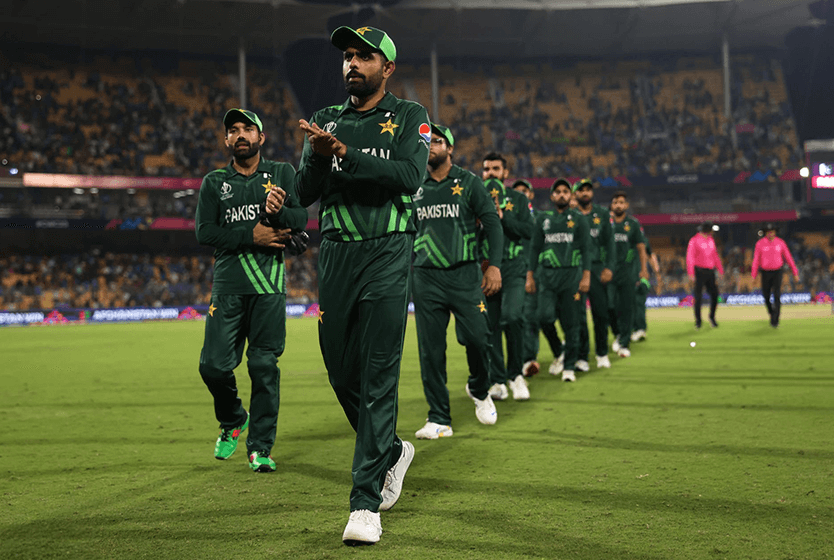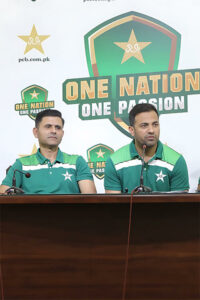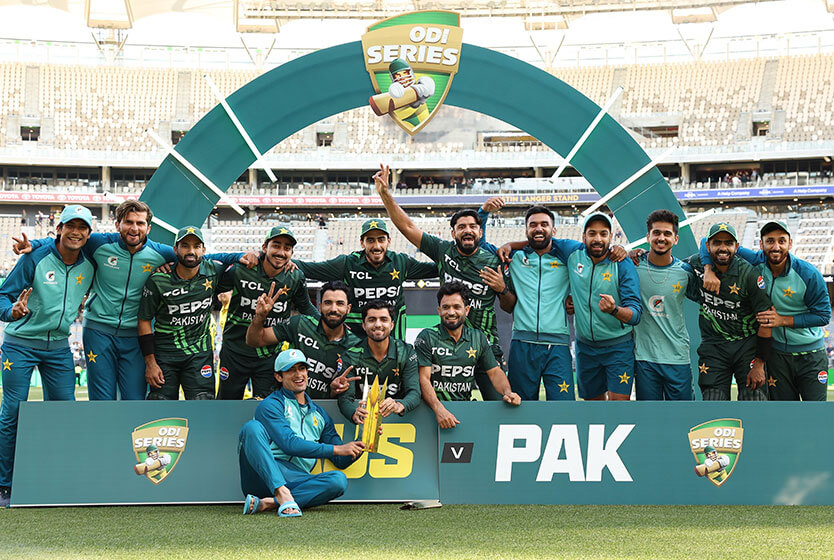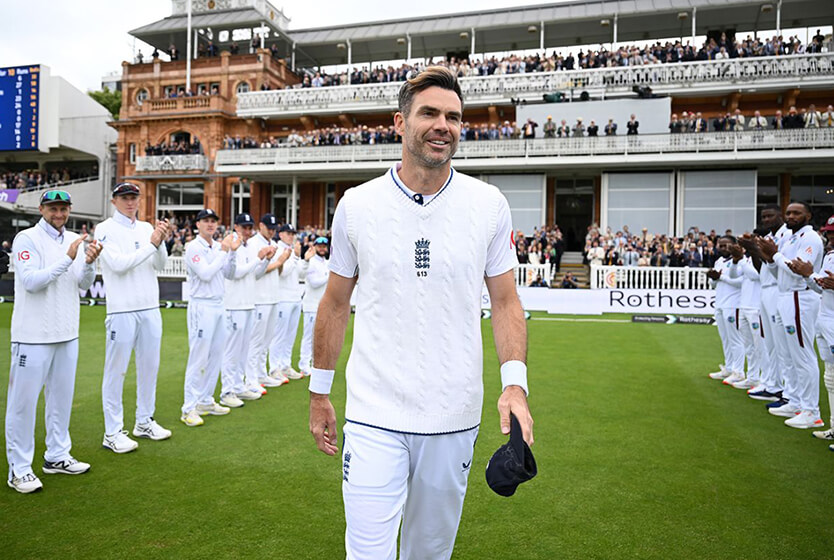
Pakistan Men’s Cricket Season 2023 x Coke Studio
If you are a Pakistan cricket fan looking for a New Year’s Eve playlist, I have you covered.
Prologue
My sincere apologies to the team, the board, and its sponsor, Pepsi. Coca-Cola did not pay me for this.
***
How else do you sum up a year like 2023? A roller coaster ride that had promised thrill and excitement. A roller coaster ride that was supposed to be fun. But a roller coaster ride that left you feeling nauseous instead.
How else do you begin talking about a year like this one? A year that brought with it hopes of a trophy triumph but a year that is coming to an end with two disastrous tournaments and a Test series in Australia – of all places – to cap it off. Karam hi hai jo baat ab tak bani hui hai. Why else would anyone be still watching, still hoping, still caring?
2023 was the year that began with a drawn Test series at home. Finally, a Test series not lost. While most fans would choose not to celebrate a home Test series draw, Pakistan fans celebrated. Pakistan celebrated. How do you not, when you have just seen two teams hand you embarrassing series losses in your own backyard? Are not draws not-losses?
A draw is a loss avoided.
Anyway, this was 2023. This was the year to focus on another format.
This was the ODI World Cup year. And luckily, this was the format Pakistan had a lot going right in (or it appeared so then). And even though the home ODI series against the Kiwis that followed the drawn Tests was lost 1-2, there wasn’t much to panic about. The loss only confirmed what everyone already knew: Pakistan’s dependence on the top order to do well and the need for the middle order to be supportive.
When the next ODI series rolled around in April-May, order seemed to have been restored. A 4-1 win against the same opposition and a resulting rise to the number 1 spot in the ICC ODI rankings.
The number 1 ODI team being led by the number 1 ODI batter equipped with, arguably, one of the best fast-bowling attacks in the world.
It all looked in shape. A complete squad in a format that mattered the most in the year. A trophy within grabs. The ODI World Cup could not have chosen a better year, a better time.
You know how sometimes, when one thing goes right, everything else starts following suit? Because that is exactly what happened. July brought with it a Test series win in Sri Lanka. Test series full of intent and positive cricket, in line with the new mantra of the “The Pakistan Way” – a phrase coined by the new management that had taken charge. Saud Shakeel and Abdullah Shafique took turns scoring double tons and breaking records while Salman Ali Agha stood ready to take reigns, down the order, and steer Pakistan to a convincing victory. A spectacle of a Pakistan side being brave, a Pakistan side living up to its words and fulfilling its promises.
The Pakistan Test side that toured Sri Lanka appeared to be different from the side that had played the Tests that must not be talked about in the previous year and the one at the beginning of the year. This was a Pakistan Test side talking about scoring at better rates and eyeing wins instead of draws. This was a Pakistan Test side talking about, believing in, and practicing “The Pakistan Way.”
The return to ODIs in August against Afghanistan, right before the Asia Cup, did nothing but reaffirm the side’s authority in the format. A clean sweep in the very conditions the Asia Cup was scheduled to take place in. Encouraging signs all around. A fairytale in writing, perhaps.
To have a top order that’s stable and scores, to have a middle order that covers all the bases, and to have that pace bowling – two consecutive tournaments, two consecutive trophies?
When the Asia Cup’s first game rolled around, confirmations were stamped. Babar Azam got a 150, and Iftikhar Ahmed registered his maiden ODI century. Everything seemed to be on the right track.
The next game against India, however, threatened to derail Pakistan from the track. A strong comeback, though, after a short rain break, saw Pakistan wrap up the entire India lineup for 266 – a chaseable score – before rain played spoilsport and the game had to be abandoned. Up next, Bangladesh suffered blows at the hands of Pakistan’s fiery pace attack as Pakistan picked up an easy win.
And then came the climax. The climax of the year. The game that changed everything. The two cursed days that changed the entire trajectory of Pakistan’s road to World Cup glory. The second game against India. The game with a reserve day – a day specially reserved to torment Pakistan. The rain-affected game that lasted two days, left behind, for Pakistan, nightmares of a lifetime. The heavy defeat was a shock in itself, but since that was, apparently, too bearable a pain, the game rendered three of Pakistan’s regulars injured, including two of Pakistan’s frontline pacers. Salman Ali Agha, Haris Rauf, and Naseem Shah were injured and out of the rest of the tournament. Naseem was out of the World Cup, too.
One day, it was a team en route to a possible Asia Cup triumph, followed by a strong chance at the World Cup. Two unfortunate days later, everything was falling apart.
The next game against Sri Lanka became a virtual knockout game, a virtual semi-final between the two teams. A rain-shortened game that appeared to be Sri Lanka’s to lose. That is, until Shaheen Shah Afridi decided to set it up for a thriller. Two wickets in the penultimate over to bring the still number 1 ODI side to a sniffing distance of the Asia Cup final, only for an edge in the final over to take the ball past the keeper for a four and book the side’s ticket home.
How did it come down to this? The World Cup was up next. But how do you carry on to a bigger tournament after such an abysmal smaller tournament? What do you take from a tournament like this? Except for the what-could-have-beens and the what-should-have-beens and except perhaps the fact that one of your best players, the only irreplaceable player in your squad, was now out. For the World Cup. And for the tour to Australia that would follow.
And yet, somehow, the worst was reserved for the World Cup.
The World Cup began with two back-to-back wins. The first game against the Netherlands felt closer than it should have been. And the one against Sri Lanka was a hard-fought win with timely centuries by Abdullah Shafique and Mohammad Rizwan in a historic chase coming to the rescue.
The first two wins were not convincing – a forgettable affair, but you still hoped. The conditions were supposed to suit your players. This was the stage to step up for them. So you hoped. And you wished. And you prayed. But you did not give up.
Even in the game against India. Especially in the game against India. Sure, the opposition had home advantage. Sure, the game was going to be played in their biggest stadium. Sure, it would be eleven men in green on the ground against a sea of blue, but you hoped. If not for a win, then a good game, at least. A competitive game. In reality, however, the game was the complete opposite. It was a replica of the past. It was another regular India vs. Pakistan World Cup game, with India securing an easy win in a one-sided match.
The next game, the game against Australia, was another repeat of the past. The game against Afghanistan? Finally, a first of something. Unfortunately though, a first to be forgotten for Pakistan. Afghanistan’s first ODI win against Pakistan and yet another loss for Pakistan at the World Cup.
Then came the game with, perhaps, the biggest heartbreak. The game against South Africa.
It was in Chennai. South Africa seemed to have had the upper hand and Pakistan hadn’t been that good. In that game and the tournament (or the tournament before that one). But the attack just seemed to have come to life; they were fighting back. It was the 46th over when Haris Rauf took an unbelievable catch off his own bowling, and now South Africa were nine down with 11 required off 30 balls. The Proteas were struggling. It was a low-scoring thriller. And Pakistan were all over South Africa at the moment. The last ball of Haris Rauf’s over, and Pakistan had a loud LBW appeal. The umpire was not convinced, but Pakistan reviewed. A replay of the ball, followed by ball-tracking. It was umpire’s call. Not out.
Enter agony.
When the decision showed up on the screen, you saw the agony the team went through. Haris could not believe it; he fell to his knees. Mohammad Rizwan, who hardly ever shows signs of giving up, bent over Haris Rauf and buried his face in his arms in disbelief. The captain was shattered. And the rest of the team that had gathered around all let out screams of frustration. Fakhar Zaman watched it all, standing still in shock. It was a cinematic masterpiece, that clip of Pakistan’s reaction. But only if you like sad movies. And soul-crushing pain.
Pakistan registered their fourth successive loss in the tournament. A loss that put them on the brink of elimination. A point where only a miracle could save them.
And miracles happened. Like they often do for Pakistan in ICC tournaments. Because when Pakistan played their next game against New Zealand, New Zealand’s massive first innings total of 401 was not enough. And Fakhar Zaman decided to hold true to his reputation as a big-game performer by playing an extraordinary innings. And because the rain interrupted at the right time. And because Pakistan ended up winning that game by 21 runs (DLS method).
But how far can you go relying on miracles? Not very far. Because even though Pakistan went on to win their next game against Bangladesh, the one against England required them to win by at least 287 runs to have a shot at a place in the semi-final. And, of course, the toss was lost and, of course, Buttler chose to bat first. Not that it mattered later, though. Because Pakistan lost that game, too.
Four wins from nine games in a tournament Pakistan was supposed to win. The failure of the top order that had carried them for so long in ODIs, a non-existent spin attack, and a pace attack that never showed up. In a tournament they had looked forward to the entire year. And the year before that. Would things have been different if Naseem Shah was never injured? Would things have been different if it wasn’t for that reserve day? Nobody knows, but a lot of us would like to believe so.
Now Pakistan are playing in Australia. A Test series in Australia. And if you have been around this team for long, you know how these go. And you are watching that happen. Consecutive years of losing out on trophies that could have been won – should have been won – followed by a year of complete devastation in the one format where the hopes were the highest. And a tour to Australia to end the year.
Goodbye, 2023. See you never.



















































Qasim Bajwa
"That's the piece!" Alvina Ahmed is brilliant, MASHAALLAH! But 'Goodbye, 2023. See you never.' remains constant... because 2023 and its almost evil events one after the other concerning Pakistan Cricket made me #BoycottPakistanCricket for life - to think I did this to the first thing I loved in my life (I sensed something about it that most of us around did too, naturally). Let's hope wd Salman Ali Agha, maybe? That probably he can change things around wd his brilliance, and I can get back to watching Pakistan Cricket again. Anyways. This was a gem, really. Absolutely loved it. Glued-to-it stuff from start to finish. Had me engrossed completely. Engaging. Interesting. Relevant. High-quality content. Exactly what I was looking for. Ofc I've saved it as well... to read again some other time definitely IA. THANK YOU for this! And keep getting better, always.